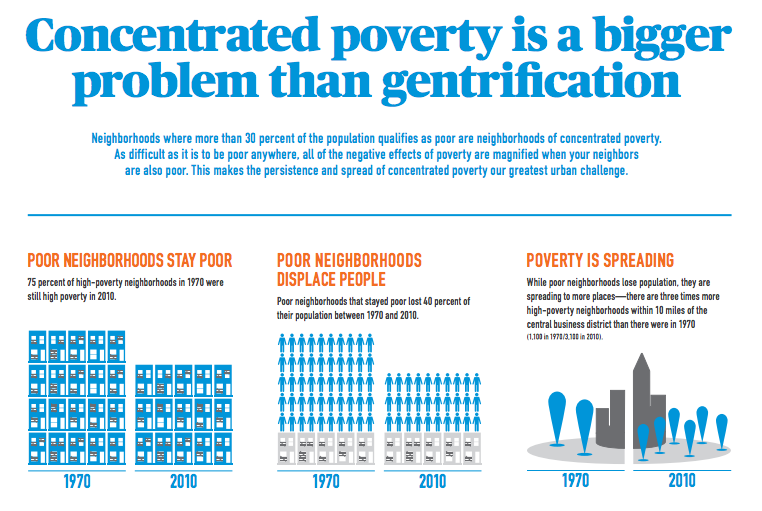What City Observatory did this week
1. A tax credit for renters. The Terman Center for Housing Innovation at the UC Berkeley has come up with three fleshed-out and cost-estimated models for providing tax credits for low income renters. The FAIR tax credit would help rectify the strong tilt in the tax system toward home ownership, and offers a way to address housing affordability that is commensurate with the scale of the problem. We summarize of the key findings of their report.
2. Cities and elections. For election day, we reviewed some of the key literature about cities and elections. We know that density is strongly correlated with the share of the population voting for democrats, cities are blue, and rural areas, even in the same state, are red. Renters are much less likely to vote than homeowners, and there’s a full generation difference between voters in national and local elections. All these factors played out on Tuesday.
3. An Infographic on Economic Segregation. Our report “Less in Common” presets and detailed statistical picture of four decades of neighborhood change in the nation’s 50 largest metros. We’ve boiled its key findings down into a two-page infographic, which you can read, download and share.

4. Great neighborhoods don’t have to be illegal. In most American cities, zoning laws, road standards, and parking requirements have made it essentially illegal to build the kind of dense, diverse walkable mixed use districts that are surging in popularity (and are often the most valuable homes in any metropolitan area). The experience of the rest of the world shows that doesn’t have to be the case. Residential doesn’t have to automatically mean single family; allowing some small fraction of non-residential uses even in “residential” zones doesn’t destroy their livability, and having state or national guidelines for zoning can eliminate or at least minimize “beggar they neighbor” NIMBYISM.
Editor’s Note: Our regular features–Must Read and New Knowledge–will return again next week. Happy Veteran’s Day everyone!

